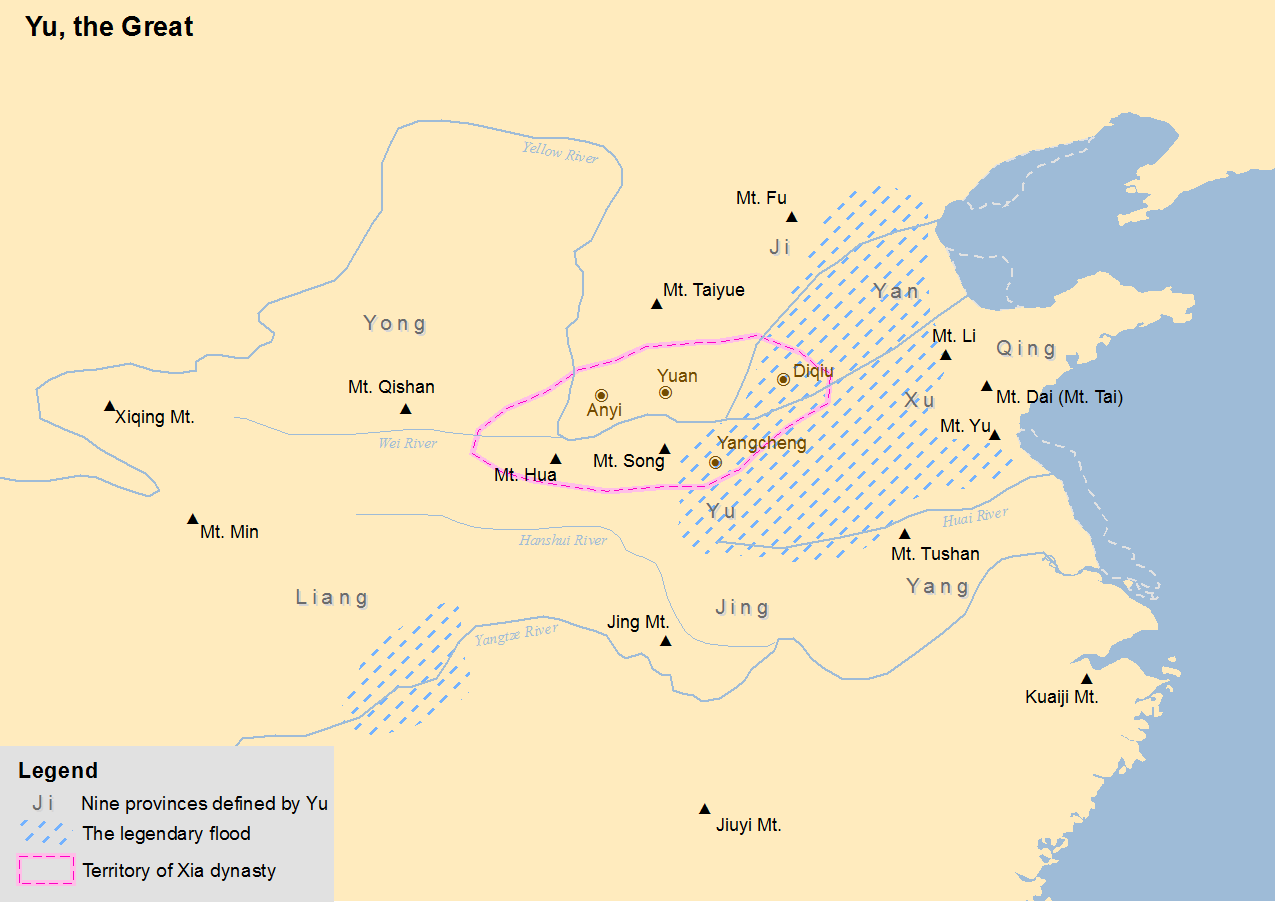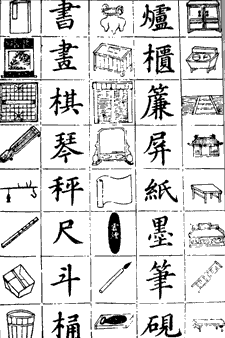|
Fou (instrument)
The ''fou'' ( 缶 or 缻; pinyin: fǒu) is an ancient Chinese percussion instrument consisting of a pottery or bronzeware crock, jar, pot, or similar vessel, which was struck with a stick. Its origin dates back to the Xia or Shang dynasties, where it was used in ritual music. It later became a standard instrument in Confucian ritual ensembles. It was first confirmed in 2004 that the is an instrument, with the discovery of nearly 500 musical instruments in the Tombs for Nobles of the Yue State, Wuxi City, Jiangsu Province. Also found there were nine other varieties of instruments, including the (a type of bell) and (chime stone) from the Central Plain, (a metal percussion instrument), (a bell with a handle), ''duo'' (big bell) and (little bell). It made its modern appearance during the 2008 Summer Olympics Opening Ceremony in Beijing. Towards the beginning of the ceremony, 2,008 dancer/percussionists staged a synchronized presentation, striking large square with glowin ... [...More Info...] [...Related Items...] OR: [Wikipedia] [Google] [Baidu] |
:Category:Chinese Words And Phrases
This category is for articles on words and phrases of Chinese origin. For articles on words and phrases related to a specific area of China, or to a specific spoken variant, please refer to one of the subcategories. Words A word is a basic element of language that carries an objective or practical meaning, can be used on its own, and is uninterruptible. Despite the fact that language speakers often have an intuitive grasp of what a word is, there is no conse ... Words and phrases by language {{CatAutoTOC ... [...More Info...] [...Related Items...] OR: [Wikipedia] [Google] [Baidu] |
Central Plain (China)
Zhongyuan (), the Central Plain(s), also known as Zhongtu (, lit. 'central land') and Zhongzhou (, lit. 'central region'), commonly refers to the part of the North China Plain surrounding the lower and middle reaches of the Yellow River, centered on the region between Luoyang and Kaifeng. It has been perceived as the birthplace of the Chinese civilization. Historically, the Huaxia people viewed Zhongyuan as 'the center of the world'. Human activities in the Zhongyuan region can be traced back to the Palaeolithic period. In prehistoric times, Huaxia, a confederation of tribes that later developed into the Han ethnicity, lived along the middle and lower reaches of the Yellow River. The term 'Zhongguo' (Central State) was used to distinguish themselves from the Siyi tribes that were perceived as 'barbaric'. For a large part of Chinese history, Zhongyuan had been the political, economic, and cultural center of the Chinese civilization, as over 20 dynasties had located their c ... [...More Info...] [...Related Items...] OR: [Wikipedia] [Google] [Baidu] |
Shang Dynasty
The Shang dynasty (), also known as the Yin dynasty (), was a Dynasties in Chinese history, Chinese royal dynasty founded by Tang of Shang (Cheng Tang) that ruled in the Yellow River valley in the second millennium BC, traditionally succeeding the Xia dynasty and followed by the Western Zhou, Western Zhou dynasty. The classic account of the Shang comes from texts such as the ''Book of Documents'', ''Bamboo Annals'' and ''Records of the Grand Historian''. According to the traditional chronology based on calculations made approximately 2,000 years ago by Liu Xin (scholar), Liu Xin, the Shang ruled from 1766 to 1122 BC, but according to the chronology based upon the "current text" of ''Bamboo Annals'', they ruled from 1556 to 1046 BC. Comparing the same text with dates of five-planet conjunction (astronomy), conjunctions, David Pankenier, supported by David Nivison, proposed dates of the establishment of the dynasty to 1554 BC. The Xia–Shang–Zhou Chronology Pro ... [...More Info...] [...Related Items...] OR: [Wikipedia] [Google] [Baidu] |
Xia Dynasty
The Xia dynasty () is the first dynasty in traditional Chinese historiography. According to tradition, the Xia dynasty was established by the legendary Yu the Great, after Shun, the last of the Five Emperors, gave the throne to him. In traditional historiography, the Xia was later succeeded by the Shang dynasty. There are no contemporaneous records of the Xia, who are not mentioned in the oldest Chinese texts, since the earliest oracle bone inscriptions date from the late Shang period (13th century BC). The earliest mentions occur in the oldest chapters of the ''Book of Documents'', which report speeches from the early Western Zhou period and are accepted by most scholars as dating from that time. The speeches justify the Zhou conquest of the Shang as the passing of the Mandate of Heaven and liken it to the succession of the Xia by the Shang. That political philosophy was promoted by the Confucian school in the Eastern Zhou period. The succession of dynasties was incorporat ... [...More Info...] [...Related Items...] OR: [Wikipedia] [Google] [Baidu] |
Chinese Character
Chinese characters () are logograms developed for the writing of Chinese. In addition, they have been adapted to write other East Asian languages, and remain a key component of the Japanese writing system where they are known as '' kanji''. Chinese characters in South Korea, which are known as '' hanja'', retain significant use in Korean academia to study its documents, history, literature and records. Vietnam once used the ''chữ Hán'' and developed chữ Nôm to write Vietnamese before turning to a romanized alphabet. Chinese characters are the oldest continuously used system of writing in the world. By virtue of their widespread current use throughout East Asia and Southeast Asia, as well as their profound historic use throughout the Sinosphere, Chinese characters are among the most widely adopted writing systems in the world by number of users. The total number of Chinese characters ever to appear in a dictionary is in the tens of thousands, though most are g ... [...More Info...] [...Related Items...] OR: [Wikipedia] [Google] [Baidu] |
Light-emitting Diode
A light-emitting diode (LED) is a semiconductor device that emits light when current flows through it. Electrons in the semiconductor recombine with electron holes, releasing energy in the form of photons. The color of the light (corresponding to the energy of the photons) is determined by the energy required for electrons to cross the band gap of the semiconductor. White light is obtained by using multiple semiconductors or a layer of light-emitting phosphor on the semiconductor device. Appearing as practical electronic components in 1962, the earliest LEDs emitted low-intensity infrared (IR) light. Infrared LEDs are used in remote-control circuits, such as those used with a wide variety of consumer electronics. The first visible-light LEDs were of low intensity and limited to red. Early LEDs were often used as indicator lamps, replacing small incandescent bulbs, and in seven-segment displays. Later developments produced LEDs available in visible, ultraviolet ... [...More Info...] [...Related Items...] OR: [Wikipedia] [Google] [Baidu] |
2008 Summer Olympics Opening Ceremony
The 2008 Summer Olympics opening ceremony was held at the Beijing National Stadium, also known as the ''Bird's Nest''. It began at 20:00 China Standard Time ( UTC+08:00) on Friday, 8 August 2008, as the number 8 is considered to be auspicious. The number 8 is associated with prosperity and confidence in Chinese culture. The artistic part of the ceremony comprised two parts titled "Brilliant Civilization" and "Glorious Era" respectively. The first part highlighted the Chinese civilization and the second part exhibited modern China and its dream of harmony between the people of the world. The stadium was full to its 91,000 capacity according to organizers. The ceremony was directed by Chinese filmmaker Zhang Yimou, who was the chief director and was assisted by Chinese choreographers Zhang Jigang and Chen Weiya. [...More Info...] [...Related Items...] OR: [Wikipedia] [Google] [Baidu] |
Fou (缶 Or 缻 In Chinese) Used On 2008 Beijing Olympics Opening Ceremony (2014-02-09 15
Fou may refer to: People * Fou Fonoti (born 1991), American football player * Fou Ts'ong (1934–2020), Chinese pianist * Pama Fou (born 1990), Australian rugby union player Other uses * Fou (instrument) (缻), an ancient Chinese percussion instrument * ''Fou'' (album), by French progressive rock band Ange See also * Le Fou (other) * Folle blanche Folle blanche, also known as Picpoule, Gros Plant, and Enrageat blanc, is a wine grape variety from southwest France. It was the traditional grape variety in Cognac and Armagnac production until the 20th century. Folle blanche is an offspring o ..., a wine grape * Fougamou Airport, in Gabon {{disambiguation ... [...More Info...] [...Related Items...] OR: [Wikipedia] [Google] [Baidu] |
Jiangsu
Jiangsu (; ; pinyin: Jiāngsū, alternatively romanized as Kiangsu or Chiangsu) is an eastern coastal province of the People's Republic of China. It is one of the leading provinces in finance, education, technology, and tourism, with its capital in Nanjing. Jiangsu is the third smallest, but the fifth most populous and the most densely populated of the 23 provinces of the People's Republic of China. Jiangsu has the highest GDP per capita of Chinese provinces and second-highest GDP of Chinese provinces, after Guangdong. Jiangsu borders Shandong in the north, Anhui to the west, and Zhejiang and Shanghai to the south. Jiangsu has a coastline of over along the Yellow Sea, and the Yangtze River passes through the southern part of the province. Since the Sui and Tang dynasties, Jiangsu has been a national economic and commercial center, partly due to the construction of the Grand Canal. Cities such as Nanjing, Suzhou, Wuxi, Changzhou, and Shanghai (separated from Jia ... [...More Info...] [...Related Items...] OR: [Wikipedia] [Google] [Baidu] |
List Of Traditional Chinese Musical Instruments
Chinese musical instruments are traditionally grouped into eight categories known as (). The eight categories are silk, bamboo, wood, stone, metal, clay, gourd and skin; other instruments considered traditional exist that may not fit these groups. The grouping of instruments in material categories in China is one of the first musical groupings ever devised. Silk ( 絲) Silk () instruments are mostly stringed instruments (including those that are plucked, bowed, and struck). Since ancient times, the Chinese have used twisted silk for strings, though today metal or nylon are more frequently used. Instruments in the silk category include: Plucked Bowed Struck Combined * () – a combination of the , , and with 50 or more steel strings. * () - strucked and bowed zither from Shandong, China. Bamboo (竹) Bamboo () mainly refers to woodwind instruments, which includes; Flutes Free reed pipes Single reed pipes Double reed pipes Wood ( 木) Most wood () instru ... [...More Info...] [...Related Items...] OR: [Wikipedia] [Google] [Baidu] |
Wuxi
Wuxi (, ) is a city in southern Jiangsu province, eastern China, by car to the northwest of downtown Shanghai, between Changzhou and Suzhou. In 2017 it had a population of 3,542,319, with 6,553,000 living in the entire prefecture-level city area. By the end of 2019, the city's registered population was 5.0283 million. Wuxi is a prominent historical and cultural city of China, and has been a thriving economic center since ancient times as a production as an export hub of rice, silk and textiles. In the last few decades it has emerged as a major producer of electrical motors, software, solar technology and bicycle parts. The city lies in the southern delta of the Yangtze River and on Lake Tai, which with its 48 islets is popular with tourists. Notable landmarks include Lihu Park, the Mt. Lingshan Grand Buddha Scenic Area and its -tall Grand Buddha at Ling Shan statue, Xihui Park, Wuxi Zoo and Taihu Lake Amusement Park and the Wuxi Museum. The city is served by Sunan Shuofang ... [...More Info...] [...Related Items...] OR: [Wikipedia] [Google] [Baidu] |




